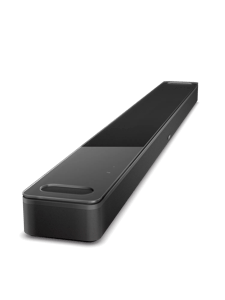While spatial audio is often used as a general term, Dolby Atmos is a specific proprietary technology developed by Dolby Laboratories and licensed to audio manufacturers and streaming services.
While spatial audio can enhance stereo recordings after they’ve been made, Dolby Atmos is part of the sound recording and mixing process from the start. Not all content is available in Dolby Atmos yet, though more content is added every day.
Dolby Atmos mixes use a bed of up to 7.1.2 channels (7 for front and sides, 1 for low frequency, and 2 for height channels) and up to 118 sound objects to position and move sounds with precise accuracy anywhere in 3D space. You can then hear sounds in front, to the sides, over your head, and behind your listening or viewing position.
This is achieved by mixing content in Dolby Atmos–enabled software. For music, this means it’s easier to separate instruments, making the mix clearer. It also increases the listener’s sense of spatial awareness, so it’s like being there while the band jams. It also allows new and interesting uses of effects and more flexibility and space in the sound field for mix engineers, instead of trying to cram everything into stereo.
In film and TV audio, specific sounds can be positioned and moved more accurately in relation to what’s happening onscreen, making it feel like you’re in the middle of the action. Sounds are perceived like they would be in the real world, creating a much more exciting experience.








